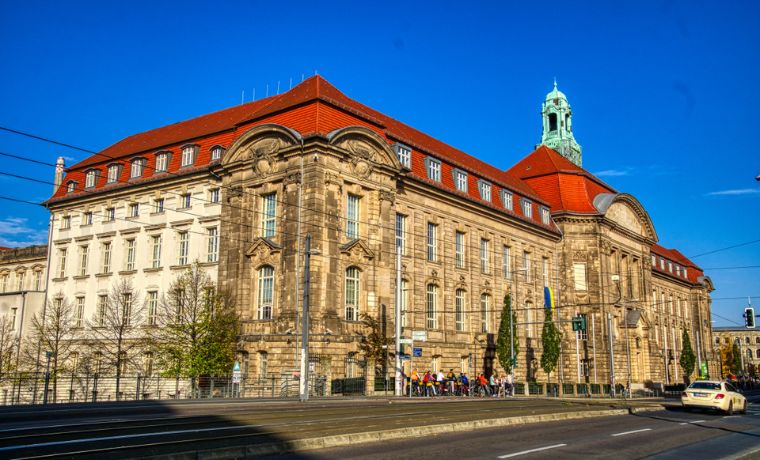Germany Index of Multiple Deprivation (IMD: 75.32)
Germany Information and Communication Technology Index (IDI: 72.0)
Germany’s Digital Transformation: Powering an Industrial Giant
Germany, Europe’s economic powerhouse, is renowned for its engineering, manufacturing capabilities, and its powerful “Mittelstand”—the hundreds of small and medium-sized companies that form the backbone of its economy. As the world moves toward a digital-first approach, Germany is in the process of a difficult and ambitious rebirth. The nation is actively merging its industrial heritage with the newest digital technology, a trend symbolized by “Industrie 4.0.” This article examines Germany’s digitalization in detail, measuring its global standing, its national strategy, and its progress in government, education, and student sectors.
The “Digitalstrategie Deutschland”: A Guide for the Future
The German government’s national strategy, “Digitalstrategie Deutschland,” sets ambitious goals for 2030. It focuses on society, the economy, and the state. Key initiatives include:
- Gigabit Networks: Nationwide fiber and leadership in 6G technology by 2030.
- Digital Economy: Expanding Mittelstand-Digital centers, supporting AI startups, and boosting venture capital.
- Skills: National Skills Strategy to fight Fachkräftemangel, training existing workers, and easing immigration for IT experts.
Modernizing the State: E-Government in Germany
The Online Access Act (OZG) mandated 575 administrative services online by 2022, using the “One for All” model. The BundID provides citizens with a unified digital identity. Despite progress, federal structure has slowed implementation, and many services still require offline elements. Plans for OZG 2.0 aim to address these gaps and improve user-friendliness.
Germany’s Digital Competitiveness: An IMD Deep Dive
Germany’s IMD score of 75.32 places it well but highlights challenges:
- Knowledge: Strong research and R&D, but tens of thousands of unfilled IT jobs hinder growth.
- Technology: Advanced in industrial standards and IIoT, but lagging in fiber deployment and consumer-facing infrastructure.
- Future Readiness: Mittelstand is cautious, slowing adoption of AI and digital tools. Government works to demonstrate benefits through support centers.
Measuring National Connectivity: Germany and the IDI
Germany’s IDI score is 72.0, reflecting advanced infrastructure but persistent urban–rural divides:
- Access: Excellent broadband and mobile in cities, but rural last-mile connectivity remains a challenge.
- Usage: High e-commerce and digital service adoption, with strong emphasis on data privacy (Datenschutz).
- Skills: Dual-education system develops practical digital vocational skills, with apprenticeships for IT and digital professions gaining popularity.
Digital Natives: The German Student’s Toolkit
German students increasingly blend digital and traditional methods. They use Schul-Cloud, laptops, and tablets for interactive lessons. Curricula emphasize not only digital literacy but also data literacy, algorithm awareness, and ethical use of technology. Yet disparities exist by state, creating uneven access.
Curriculum is evolving too. There is a growing focus on not just digital literacy (how to use software) but also computational thinking, data literacy, and the social implication of algorithms and AI. But the experience can vary drastically state by state and even school by school, creating a patchwork of digital equity. The KMK, the conference of state ministers of education, works to establish uniform standards, but progress toward a truly uniform digital education system across all 16 states is slow and complex.
Measuring National Connectivity: Germany and the IDI
The ICT Development Index (IDI) provides a window into digital inclusion and infrastructure. With 72.0, Germany presents a digitally advanced society with widespread access but also one where the urban-rural divide persists.
Access: Internet penetration in Germany is over 90%, and the quality of mobile and broadband networks in urban areas is excellent. The principal difficulty is the “last mile” in rural and semi-rural areas. While the government’s gigabit strategy is being fully implemented, filling in these final gaps requires intensive investment and overcoming regulatory hurdles, which means some areas have slower speeds than in urban areas.
Internet usage is nearly universal. Germany boasts a massive e-commerce sector, and digital services are everywhere. One unique aspect is the population’s intense emphasis on data privacy and security (Datenschutz), which can lead to more modest adoption of certain cloud services or social media usage than in other Western nations.
Skills: Germany’s highly respected dual-education system is a major plus, leading to a labor force with very good practical skills. This system is being extended to the digital age, with apprenticeships for professions like “IT Systems Electronics Technician” or “Digitalization Management Clerk” becoming more and more popular and relevant for the economy.
Education in the Digital Age: The “DigitalPakt Schule”
The DigitalPakt Schule, launched in 2019, provides €5 billion in federal funding, supplemented by states. It supports Wi-Fi, tablets, interactive boards, and digital platforms. Implementation has been criticized for bureaucracy and delays. Teacher training is emphasized to ensure technology is effectively used. Talks for “DigitalPakt 2.0” focus on long-term maintenance, IT support, and improved digital pedagogy.
The pact funds essentials like whole-school Wi-Fi, interactive whiteboards, laptops, and tablets. Its implementation has been decried as sluggish and red-taped. Schools and municipalities have consistently struggled to navigate complex application processes to access the funds. Aside from hardware, the pact funds the establishment of safe digital learning environments and, notably, teacher training initiatives. It is the expert consensus that it doesn’t suffice to provide technology without telling teachers pedagogically how to use it. As the initial funding phase draws to an end, talks for a “DigitalPakt 2.0” are underway with the goal of achieving long-term financing, ongoing IT maintenance for schools, and the further development of digital content and methodology.
